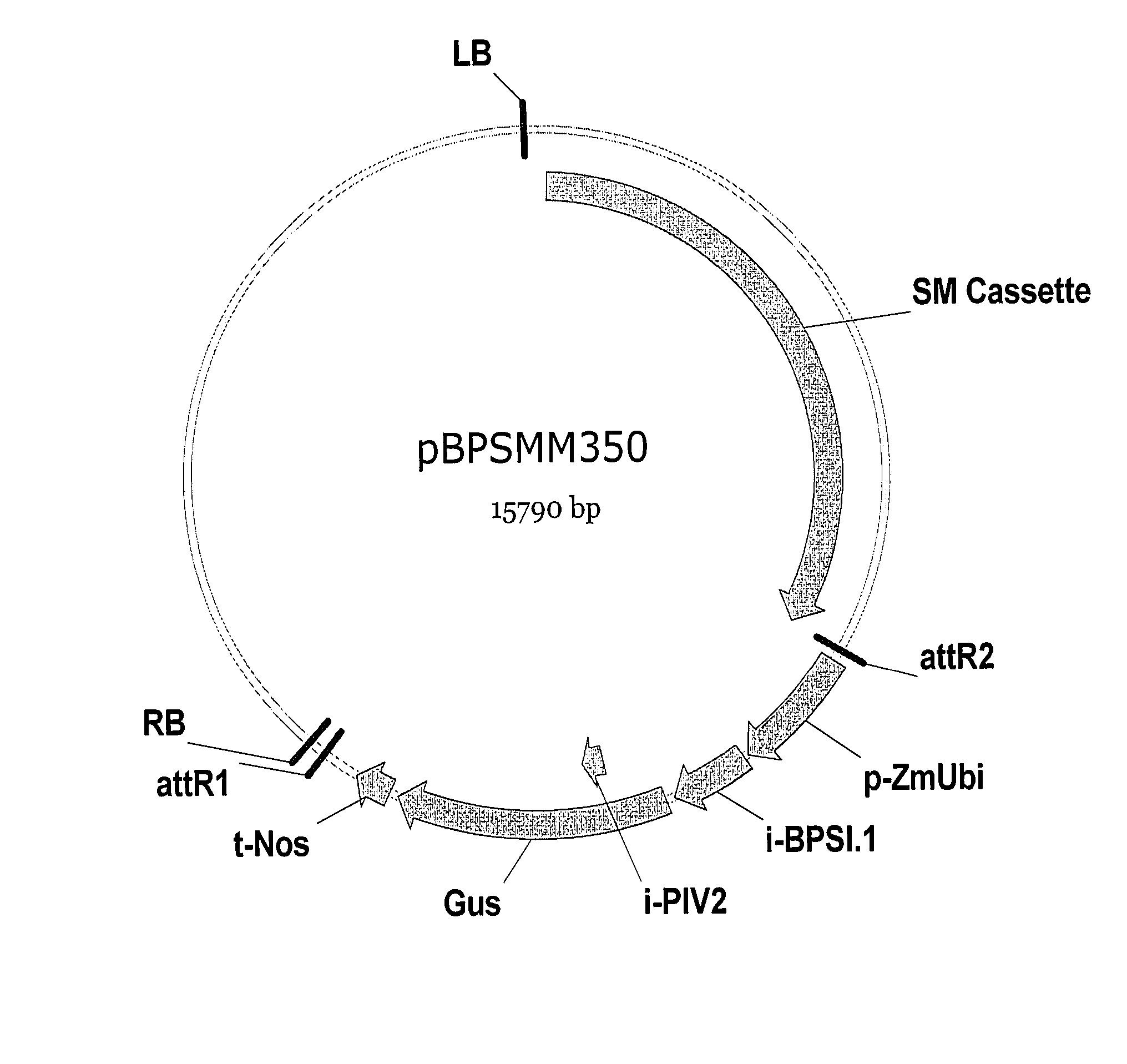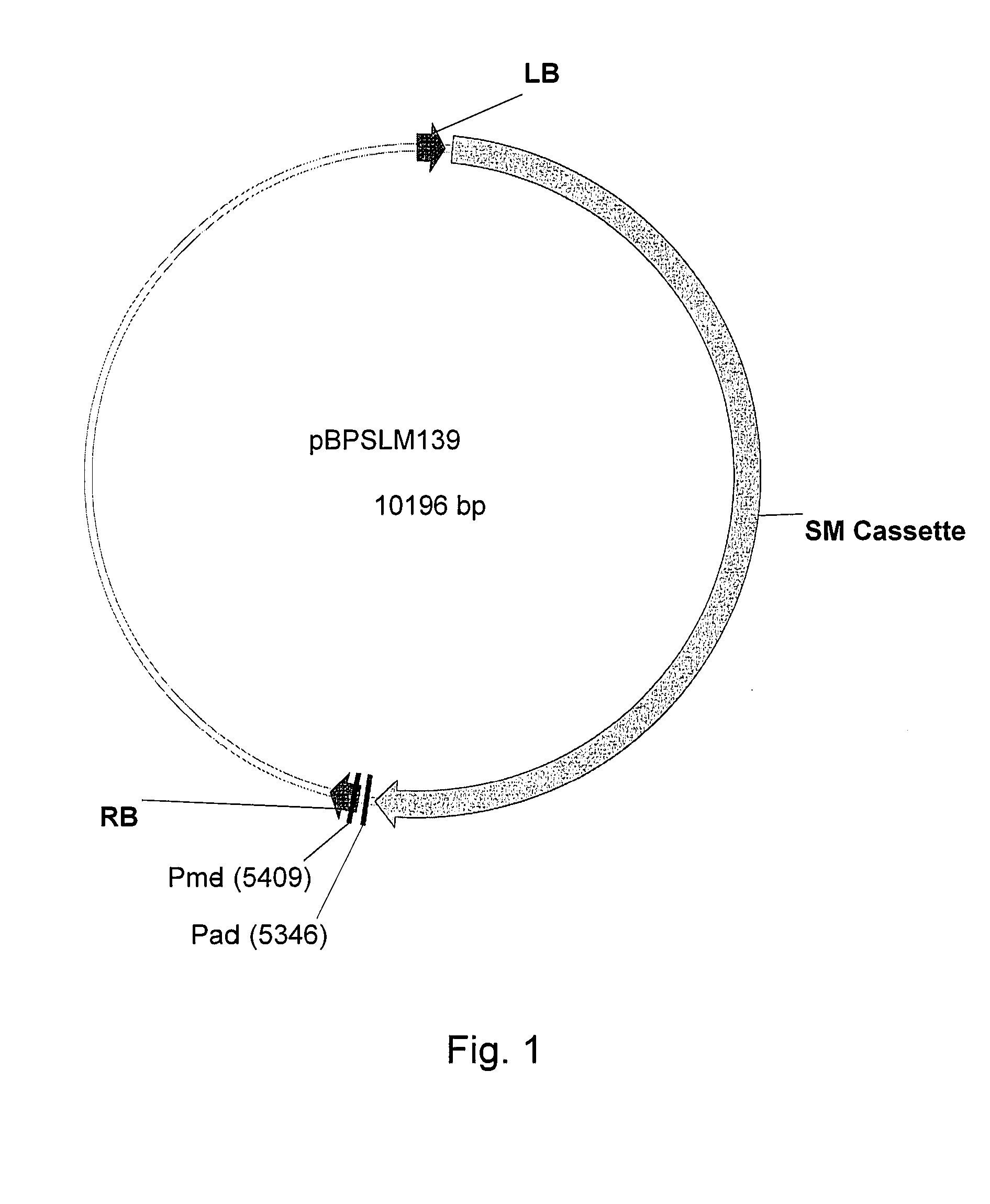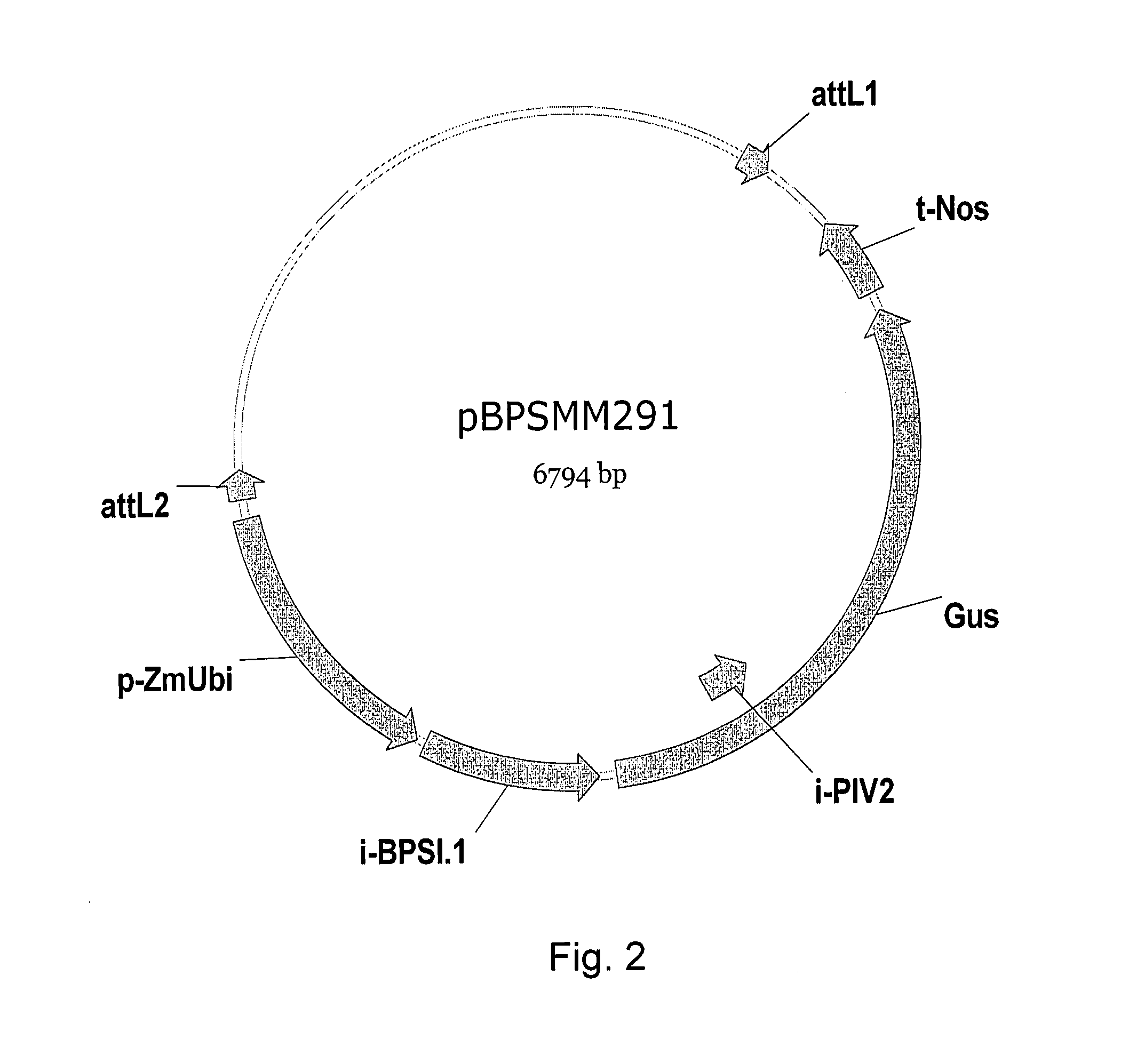Expression Enhancing Intron Sequences
a technology of introns and intron sequences, applied in the field of expression enhancing intron sequences, can solve the problems of inability to predict and limited collection of introns with expression enhancing properties
- Summary
- Abstract
- Description
- Claims
- Application Information
AI Technical Summary
Benefits of technology
Problems solved by technology
Method used
Image
Examples
example 1
Identification and Characterization of IME-Introns in Highly Expressing Genes
[0392]1.1 Identification of Strongly and Constitutively Expressed Oryza sativa Gene Candidates.
[0393]Using the above described “sequencing by hybridization method’ in silico clone distribution analysis of rice cDNA libraries have been performed.
[0394]The rice cDNA done distribution profiles were derived from about 7.6 million rice cDNA clones, which were generated over 23 rice cDNA libraries of different tissues at different developmental stages and biotic / abiotic treatments. Method for the production of cDNA libraries are well known in the art (e.g. Gubler U, and Hoffman B J. (1983) A simple and very efficient method for generating cDNA libraries. Gene 25(2-3):263-269; Jung-Hwa Oh et al. (2003) An improved method for constructing a full-length enriched cDNA library using small amounts of total RNA as a starting material. EXPERIMENTAL and MOLECULAR MEDICINE 35(6):586-590; Lanfranchi et al. (1996) Identifica...
example 2
IME-Introns Located in the Annotated DNA Sequences
2.1 In Silico Screening System
[0416]The in silico intron-screening system for identifying introns that have the functional IME comprises three major components: (1) Generate intron sequence database and screen for intron candidates using the functional IME criteria (indicated in Example 1.3); (2) Define the expression profiles of these candidate genes from which introns were selected; (3) Further examine the selected gene structures by conducting a mapping of EST sequences onto the genomic region where the candidate genes resided.
[0417]More than 30,000 annotated rice and maize genomic sequences were downloaded from NCBI. Intron, 5- and 3-UTR, promoter and terminator sequences were isolated (in silico) from those annotated genes and their corresponding sequence databases were generated (Table 10, 11). From the generated intron sequence database, more than 111,800 introns (i.e., 106049 rice introns, 4587 maize introns) were screened fo...
example 3
Identification of IME-Introns Located in the 5′ Untranslated Region
3.1 In Silico Screening System
[0435]The in silico intron screening system for identifying introns that have the functional IME located in the ′5 UTR comprises three major components: (1) Genome mapping of the entire rice CDS, released from Institute of Genome Research on Oct. 2, 2003 and the EST sequence collections; (2) identification and selection of the introns located in the 5 UTR using both the functional IME criteria and the rice cDNA clone distribution profiles; (3) validation of the selected 5 UTR introns by examining the sequence alignments among the genomic DNA, CDS and ESTs, the gene model, sequence reading frame and intron splicing sites
[0436]A total of 56,056 annotated rice CDS were mapped onto the Japonica rice genome in which both rice CDS and genomic DNA sequences were obtained from The Institute of Genome Research. Additional 422,882 rice EST sequences of public and in-house sources were also mapped ...
PUM
| Property | Measurement | Unit |
|---|---|---|
| temperature | aaaaa | aaaaa |
| pH | aaaaa | aaaaa |
| volume | aaaaa | aaaaa |
Abstract
Description
Claims
Application Information
 Login to View More
Login to View More - R&D
- Intellectual Property
- Life Sciences
- Materials
- Tech Scout
- Unparalleled Data Quality
- Higher Quality Content
- 60% Fewer Hallucinations
Browse by: Latest US Patents, China's latest patents, Technical Efficacy Thesaurus, Application Domain, Technology Topic, Popular Technical Reports.
© 2025 PatSnap. All rights reserved.Legal|Privacy policy|Modern Slavery Act Transparency Statement|Sitemap|About US| Contact US: help@patsnap.com



